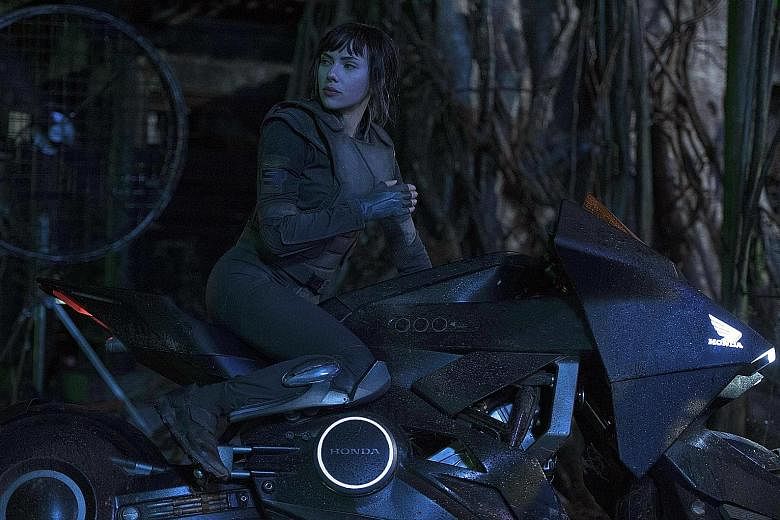REVIEW/ACTION/SCIENCE FICTION
GHOST IN THE SHELL (PG13)
107 minutes/Now showing/ 3/5 stars
The story: In future Japan, Major (Scarlett Johansson) works for anti-terrorist paramilitary unit, Section 9. Her team, led by Chief Aramaki (Takeshi Kitano) are on the trail of a hacker who wants to bring down Hanka Robotics, the corporation responsible for the trend in cybernetically enhanced humans.
The studio that made this could have Americanised everything in the source manga and anime, as was done with Seven Samurai (1954), which became The Magnificent Seven (1960 and 2016), and with The Departed (2006), a remake of Hong Kong's Infernal Affairs (2002).
But instead of setting the movie in, say, future Los Angeles, the studio stuck with the vision of creator Masamune Shirow and anime director Mamoru Oshii. This is because the cyberpunk world the two created was dense, beautiful and most of all, very cool.
This bold but flawed live-action version therefore exists as reverent homage and fan service by the creative team behind it, including director Rupert Sanders. There are faithful, almost shot-by-shot recreations of iconic scenes such as the water fight and Major's cybernetic assembly in a bio-tank.
Until towards the end of the film, characters mostly look blank and adopt cool poses; this is not a richly detailed universe. Viewers have to fill in the blanks as to how people in the future exist and do everyday things.
The source manga and anime run into several volumes and Sanders has only so much time to work with. There is a peek into Major's apartment, but because she is mostly machine, the setting is bleached of anything relatable.
Contrast this with director Ridley Scott's warmer, but equally noir-ish Blade Runner (1982). Lead character Rick (Harrison Ford) slurps noodles at a hawker stall and is annoyed when a colleague speaks the Asian-European street patois of the future.
Sanders treats this mainly as a style exercise, making sure the constituent parts look right, and they do. Perhaps he should have spent more time on the whole.
The problems that beset the 1995 anime are carried over - opaque character motivations and hard-boiled dialogue mixed with reams of jargon-filled exposition.
This tone is a deliberate stylistic choice and is a reason that the 1995 movie stayed a cult hit instead of breaking into the mainstream.


